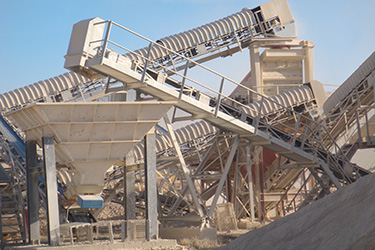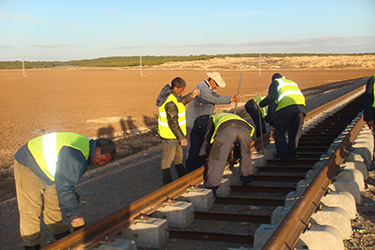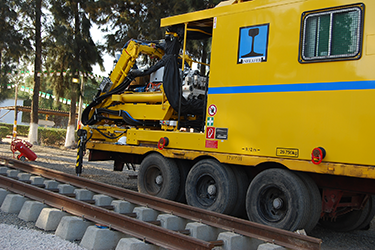How Predictive Maintenance Enhances Safety and User Experience
Building upon the foundational understanding of how maintenance schedules impact safety and entertainment, it is crucial to explore how modern predictive maintenance transforms these outcomes through technological innovation. As industries seek to enhance safety protocols and elevate user experiences, predictive maintenance offers proactive solutions that surpass traditional approaches, providing real-time insights and dynamic responses. This evolution not only minimizes risks but also ensures a seamless, engaging environment for users and operators alike.
How Predictive Maintenance Works: Technologies and Data-Driven Insights
At the core of predictive maintenance are advanced sensors, the Internet of Things (IoT), and sophisticated data analytics. Sensors installed on equipment continuously monitor parameters such as temperature, vibration, and pressure, transmitting data in real-time to centralized systems. IoT connectivity ensures that this data is aggregated seamlessly, enabling a comprehensive view of equipment health.
Machine learning algorithms and artificial intelligence (AI) analyze these vast data streams to identify patterns indicative of impending failures. For instance, a conveyor belt in a manufacturing plant might show subtle increases in vibration that, when analyzed over time, predict wear before it results in breakdown. This constant data flow facilitates a transition from rigid, time-based maintenance schedules to flexible, condition-based interventions, significantly reducing downtime and hazards.
Enhancing Safety Through Predictive Maintenance
One of the most critical benefits of predictive maintenance is early detection of equipment deterioration, which directly correlates with improved safety outcomes. By identifying wear and tear before failures occur, organizations can schedule repairs proactively, thereby preventing accidents and reducing the risk of catastrophic failures.
For example, in transportation infrastructure, sensors embedded in bridges and rail systems monitor stress levels and fatigue, alerting authorities to potential safety concerns long before a failure occurs. Similarly, in manufacturing plants, predictive analytics can forecast machinery malfunctions that could pose safety hazards to workers, enabling timely interventions that mitigate harm.
« Predictive maintenance shifts safety management from reactive to proactive, reducing unexpected failures that can endanger lives. »
Case Study: Transportation Safety Improvements
| Aspect | Outcome |
|---|---|
| Sensor Monitoring of Rails and Bridges | Early detection of structural stress, preventing derailments and collapses |
| Train Equipment Diagnostics | Forecasting component failures, reducing accident risks |
Improving User Experience with Anticipatory Maintenance
Beyond safety, predictive maintenance significantly enhances user experience by minimizing service interruptions and ensuring reliability. In entertainment venues such as theme parks, casinos, or gaming centers, unplanned outages can frustrate visitors and diminish perceived quality. Implementing predictive systems allows operators to anticipate equipment failures—like faulty gaming machines or ride components—and schedule maintenance during low-traffic periods, ensuring continuous operation.
Moreover, personalized maintenance approaches, driven by user data, can tailor service schedules to individual preferences. For instance, in gaming arcades, data analytics can predict when specific machines require servicing based on usage patterns, reducing waiting times and optimizing the entertainment experience.
Example Scenarios
- Seamless Gaming: Predictive analytics monitor hardware health, preventing crashes and ensuring games run smoothly, thus maintaining customer satisfaction.
- Reliable Ride Operations: Amusement park rides equipped with sensors predict mechanical wear, scheduling maintenance before breakdowns occur, delivering a safe and enjoyable experience for visitors.
The Impact on Operational Efficiency and Cost Management
Organizations adopting predictive maintenance often realize substantial improvements in operational efficiency. By leveraging predictive analytics, companies can allocate resources more effectively, focusing maintenance efforts where they are most needed. This targeted approach reduces unnecessary inspections and part replacements, saving both time and money.
Additionally, preventing unexpected failures through early intervention minimizes costly emergency repairs and downtime, which can disrupt operations and erode profit margins. Over time, these strategies lead to a more resilient infrastructure and a more satisfied customer base.
Long-term Benefits
- Extended equipment lifespan
- Reduced maintenance costs
- Enhanced safety standards
- Improved customer satisfaction and loyalty
Challenges and Considerations in Implementing Predictive Maintenance
Despite its advantages, deploying predictive maintenance systems requires addressing several challenges. Data security and privacy are paramount, as sensitive operational data must be protected from cyber threats. Integration with existing maintenance frameworks can also be complex, necessitating compatibility assessments and system upgrades.
Furthermore, organizations need to invest in staff training and skill development to interpret predictive insights accurately and respond effectively. Without proper expertise, the full potential of predictive maintenance cannot be realized, potentially leading to underutilization or misinterpretation of data.
Future Trends: How Predictive Maintenance Will Shape Safety and User Experience
Emerging technologies promise to further revolutionize predictive maintenance. Advances in AI, including deep learning, enable more accurate failure predictions and autonomous decision-making. Sensor technology continues to improve in precision and durability, expanding the scope of monitoring capabilities.
Digital twins—virtual replicas of physical assets—allow for simulation and testing of maintenance scenarios without risking actual equipment. These models facilitate predictive insights and optimize maintenance planning, leading toward fully autonomous systems capable of self-maintenance and real-time adjustments, thereby elevating safety and user experience to unprecedented levels.
Potential Developments
- Integration of AI-driven digital twins for real-time simulation
- Development of autonomous, self-healing infrastructure systems
- Expansion of predictive maintenance into new industries, such as healthcare and smart cities
Connecting Back: From Predictive Maintenance to Overall Maintenance Strategies
While predictive maintenance represents a significant advancement, it functions best when integrated into a comprehensive maintenance strategy. Combining traditional scheduled inspections with predictive analytics creates a hybrid approach that maximizes safety and entertainment quality. This synergy ensures that organizations can address both routine and unforeseen issues effectively.
As outlined in the parent article How Maintenance Schedules Impact Safety and Entertainment, continuous innovation and adaptation in maintenance planning are essential for maintaining high standards in safety and user satisfaction. Embracing predictive maintenance as part of this evolution ensures organizations remain resilient, efficient, and focused on delivering exceptional experiences.





